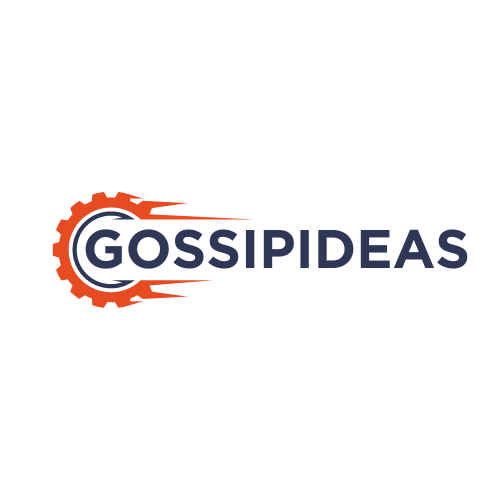Storytelling is a timeless art that transcends industries, whether you’re making films, crafting video games, or creating digital content. The ability to convey a compelling narrative visually is crucial in today’s media-driven world. At the heart of this visual storytelling is the storyboard—an essential tool for mapping out scenes, ensuring continuity, and helping creative teams collaborate more effectively. For creators looking to streamline their storyboarding process, the Ashley Ann Tahigan Storyboard Guide has emerged as a key resource.
In this article, we’ll explore how Ashley Ann Tahigan has mastered the art of storyboarding and why her guide is an indispensable tool for creators across multiple fields. We’ll cover her approach, essential tools, processes, and how her insights can help you take your storyboarding skills to the next level.
What is Storyboarding?
Storyboarding is the process of visualizing a story before it’s fully executed. Whether it’s for a film, TV show, animation, or video game, storyboards allow creators to outline key scenes, action sequences, and even the flow of dialogue. By breaking down the visual narrative into individual frames, creators can ensure that each shot contributes to the overall story.
A storyboard typically consists of a series of drawings or images that represent how the scenes will unfold. These visuals are often paired with notes that include directions on movement, dialogue, or specific details about what should be captured in the shot. The Ashley Ann Tahigan Storyboard Guide helps creators, from novice to expert, understand and implement these elements effectively.
Ashley Ann Tahigan’s Approach to Storyboarding
Ashley Ann Tahigan is renowned for her innovative take on storyboarding, blending traditional techniques with modern tools to enhance creativity, efficiency, and clarity. Her guide offers a systematic approach to building visually compelling narratives.
One key aspect of Tahigan’s approach is her focus on adaptability. While many storyboarding guides adhere to rigid rules, Ashley Ann Tahigan Storyboard Guide emphasizes flexibility. Every project, whether it’s a short film, a complex animation, or a video game, requires a unique approach to storyboarding. Tahigan’s guide provides customizable methods to suit each project’s specific needs.
She also prioritizes storytelling over technical perfection. While precision is important, Ashley Ann Tahigan Storyboard Guide focuses on ensuring that the narrative’s emotional impact shines through in the visuals. Her emphasis on storytelling helps creators move beyond the mechanics of framing and focus on the core message they want to convey.
Essential Tools for Effective Storyboarding
The Ashley Ann Tahigan Storyboard Guide stresses the importance of using the right tools for storyboarding. In today’s digital age, creators have a wide array of options, from traditional pencil and paper to advanced software platforms. Tahigan’s guide highlights the pros and cons of each approach, helping creators choose the tools that best suit their needs.
Traditional Storyboarding Tools: For creators who prefer the tactile experience of drawing by hand, traditional storyboarding tools such as pencils, markers, and sketchpads still hold value. Hand-drawn storyboards allow for rapid iterations and the ability to quickly visualize ideas.
Digital Storyboarding Software: For those looking to streamline the process, digital tools offer increased flexibility and features that traditional methods lack. Programs like Storyboarder, Toon Boom Storyboard Pro, and Adobe Illustrator allow for easy editing, collaboration, and integration into larger digital workflows. The Ashley Ann Tahigan Storyboard Guide recommends these tools for creators working in digital spaces, where speed and efficiency are essential.
The guide also covers the growing use of AI and automation in storyboarding, which can help speed up repetitive tasks like creating template frames, leaving more room for creativity.
The Ashley Ann Tahigan Storyboarding Process
The Ashley Ann Tahigan Storyboard Guide breaks down the process of creating storyboards into several stages, each focusing on a specific element of the visual narrative. Below is an overview of her step-by-step process:
1. Idea Generation
The first step is to refine the idea. Before jumping into the visuals, the story itself must be solid. What’s the core message? Who are the characters? What’s the arc? These questions must be answered to ensure the storyboard accurately reflects the story’s essence. Ashley Ann Tahigan Storyboard Guide encourages creators to focus heavily on brainstorming and ideation during this stage.
2. Scene Breakdown
Once the story is clear, it’s time to break it down into individual scenes. This is where the narrative flow starts taking shape. The storyboard should divide the story into manageable chunks, each representing a key moment or action.
3. Character Placement and Development
One of the key challenges in storyboarding is ensuring that characters are consistently represented from scene to scene. The Ashley Ann Tahigan Storyboard Guide stresses the importance of developing characters visually, ensuring that their movements, expressions, and interactions are clearly defined.
4. Visual Composition
Composition is crucial in ensuring that each frame serves the story. This includes determining the camera angle, focus, and framing. The Ashley Ann Tahigan Storyboard Guide provides insight into choosing the right angles to enhance storytelling, from close-ups that highlight emotion to wide shots that establish setting.
5. Timeline and Continuity
A great storyboard ensures that scenes flow smoothly from one to the next. By focusing on continuity, creators can avoid jarring transitions or disjointed storytelling. Ashley Ann Tahigan Storyboard Guide emphasizes the need to maintain a cohesive visual and narrative flow.
Storyboard Formatting and Best Practices
The Ashley Ann Tahigan Storyboard Guide provides practical advice on how to format a storyboard for maximum clarity and effectiveness. Consistent formatting is key when working in a collaborative environment where multiple people need to interpret the storyboard.
Some best practices include:
Consistent Frame Sizes: Ensuring that each frame is the same size for uniformity.
Clear Annotations: Adding clear notes on action, camera movement, and dialogue.
Well-Defined Visuals: Keeping drawings simple but expressive, focusing on essential elements.
By following these best practices, creators can ensure their storyboard is accessible and useful to everyone involved in the project.
Storyboarding for Various Media
The Ashley Ann Tahigan Storyboard Guide emphasizes that storyboarding needs to be adapted based on the medium. Each format has its own unique requirements, and Tahigan provides customized tips for different platforms:
Film and TV: Storyboarding here involves visualizing scenes driven by dialogue and action, with an emphasis on pacing and transitions.
Animation: Storyboarding for animation demands detailed planning to capture character movement, timing, and facial expressions.
Video Games: With video games often featuring non-linear storytelling, the guide helps in planning interactive sequences and player-driven events.
Commercials and Ads: For commercials, the focus is on concise storytelling. Tahigan’s guide covers how to emphasize key moments in short-form content to grab attention quickly.
Overcoming Storyboarding Challenges
Even seasoned creators encounter challenges during storyboarding, from creative slumps to time pressures. The Ashley Ann Tahigan Storyboard Guide offers helpful strategies for tackling these issues:
Creative Blocks: Tahigan recommends engaging in exercises that boost creativity when ideas aren’t flowing.
Time Management: The guide highlights the importance of pre-planning and setting clear milestones for each stage of the storyboarding process.
Collaboration: Storyboarding is often a collaborative effort, and the guide offers advice on presenting and refining storyboards based on team feedback.
How Ashley Ann Tahigan’s Guide Helps Creators
The Ashley Ann Tahigan Storyboard Guide is a valuable resource for creators of all experience levels. Whether you’re a beginner learning the basics or an experienced filmmaker seeking to enhance your skills, Tahigan’s guide provides actionable advice for improving your storyboarding process.
By using the techniques outlined, creators can streamline their workflow, save time, and create stronger visual narratives. The guide benefits students, professionals, and hobbyists, providing them with the tools to enhance storytelling and planning.
FAQ Section
Who is Ashley Ann Tahigan, and why is her guide useful?
Ashley Ann Tahigan is a respected storyboard artist, and her guide offers practical advice for improving storyboarding, from initial concept development to final visual composition.
What software does Ashley Ann Tahigan recommend?
The guide suggests using tools like Storyboarder, Toon Boom Storyboard Pro, and Adobe Illustrator for their flexibility and ease of use.
Can this guide be applied to projects beyond film and animation?
Yes, the guide is adaptable for use in video games, commercials, and any project involving visual storytelling.
What is the difference between traditional and digital storyboarding?
Traditional storyboarding involves hand-drawing frames, while digital tools allow for easier revisions and collaboration.
How can a beginner improve their storyboarding skills?
Beginners should focus on storytelling fundamentals, practice visual composition, and follow the tools and techniques provided in Tahigan’s guide.
When is a storyboard considered complete?
A storyboard is complete when it clearly communicates the story, action, and emotion through its visuals.
What are common storyboarding mistakes to avoid?
Avoid overcrowded frames, inconsistent character designs, and unclear notes or annotations.
How can I make my storyboard more visually appealing?
Use dynamic camera angles, clear composition, and concise notes to make your storyboard more engaging.
Conclusion
The Ashley Ann Tahigan Storyboard Guide is more than just a manual—it’s a creative partner for storytellers. Whether you work in film, animation, gaming, or digital media, Tahigan’s insights will help you refine your workflow and bring your stories to life. By following the guide’s principles, you’ll master storyboarding and elevate your visual storytelling abilities.










